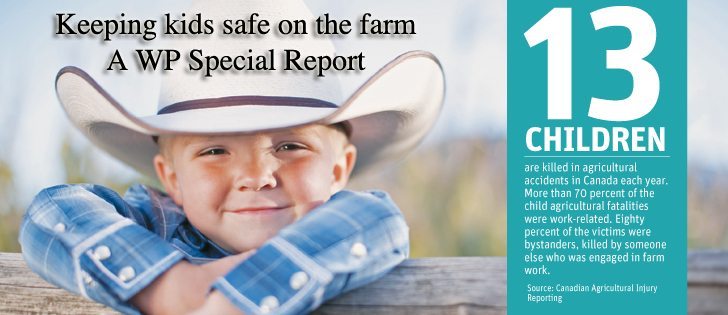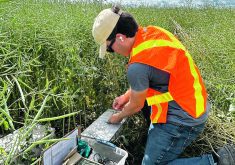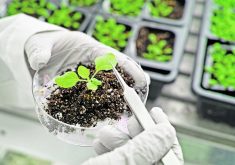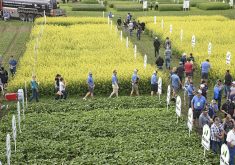It’s hard to define empowerment, except that it’s one of those feel-good words frequently used by social workers, psychologists and motivational speakers.
Regardless of definition, empowerment is an excellent word to describe why Lauren Reynolds, a Grade 12 student at Evan Hardy Collegiate in Saskatoon, liked a course she took at the school last year called bioresource management.
“(In the course) you’re in groups of six or seven kids … and you’re kind of expected to go out and find (the answers) yourself. Then, report back to your group,” Reynolds said.
Read Also

A power of attorney document may no longer be enough
Recently, some financial institutions have begun imposing their own internal form of “verification” requirement with respect to powers of attorney.
“And you can’t really ask the teacher because half the time they don’t know either.”
That approach to education, creating a classroom atmosphere where students are expected to learn on their own, obviously had an impact on Reynolds because this fall she will study agriculture and bioresources at the University of Saskatchewan.
“I’m going to start at the college of agriculture next year and I’m going to take the renewable resource management course,” said Reynolds, who lives near Aberdeen, Sask.
“That course (bioresource management at Evan Hardy) is definitely why I’m taking it.”
Bioresource management, now in its third year at Evan Hardy, is a Grade 11 course that offers students credits in biology and communications.
It teaches students about the connections between soil, water, plants, animals, humans and the economy.
However, teachers don’t really teach the course because students are expected to learn on their own and by collaborating with partners in their group, said Evan Hardy teacher Tina Rioux.
“Most of the learning that takes place in our building … is a lot of transmission. A lot of the time, (the teacher) is the one that has all the information and we’re going to give that to (the students),” said Rioux, who has taught the course since its inception in 2009.
“In this case, we don’t have to be the experts…. As a teacher, it’s hard to relinquish that control, but we feel that’s part of the benefit of the program.”
Students in the all-afternoon course are presented with a series of case studies, lasting three to five weeks, which connect the classroom to real world problems.
For example, in early January they were working on a case involving chronic wasting disease (CWD), a nervous system disease in deer and elk that can be transmitted to livestock.
The students gathered information on their own about CWD using the internet, telephone interviews, newspaper articles and scientific journals and then reported their findings to their classmates.
Rioux and fellow bioresource management teacher Sarah Clark also take the students on frequent field trips to meet local experts in fields such as soil science, plant science, veterinary and forestry.
Reynolds said the format of the bioresource management course overwhelmed her when she started it in the fall of 2010. However, she grew to love the course once she overcame the initial problems of dealing with something new.
“From a student’s perspective, you’re learning in a very different way from the usual classroom environment,” she said. “I found I learned a lot more that way.”
Clark said the course’s format motivates students and captures their attention.
“What I saw, by the end of the semester, was that these students were engaged in what they were doing,” she said. “(It’s) turned something on inside them, more so than what you would see in a regular classroom.”
Rioux said the students are barely recognizable after they complete the course.
“When they first start they can barely say two sentences to each other (in the groups. Then) … for them to stand in front of a Grade 10 class with 30 students and talk about their experience in the course, we’re like proud mothers. We’re beaming because we see the growth these students go through.”
One of the objectives of bioresource management at Evan Hardy is to convince urban students that agriculture is an attractive career option.
Jon Treloar, community liaison co-ordinator with the U of S’s College of Agriculture and Bioresources, designed the biology portion of the high school bioresource management course.
He said the course forces students to move beyond a perception of agriculture as nothing but crops and cows by presenting issues in the natural world and tying those concerns back to agricultural practices, good or bad.
That kind of change in thinking might encourage more urban students to consider a career in agriculture, Treloar said.
Rioux said only a few students in the Evan Hardy program have gone on to study agriculture at the university level.
However, the program is growing, with the number of students in the class increasing from 18 in the first year to 35 in 2011-12.
As a result, Rioux said it’s likely there will be more opportunities to get Evan Hardy students excited about a potential career in agriculture and related fields.
“Part of the draw for the agriculture community is that these are some of our top students,” she said.
“And these are city kids who don’t have a lot of vested interest in agriculture.”















